
What Makes a Great Teacher?
June 7, 2022
At the first lesson of the young pianist Josef Hofmann, his teacher, the legendary pianist Anton Rubinstein, told his student that he would talk about music and technique, but never play for him. Rubinstein wanted Hofmann to develop unencumbered his own musical personality.
On the other hand, as a teenager studying with the violin virtuoso Toscha Seidel, I was often only able to play a few notes of my assigned concerto before Seidel would order me to stop. He then would perform the work spectacularly. Seidel hoped to give me an example of a finished performance.
Which approach was better?
My violin teacher at the Curtis Institute of Music, Ivan Galamian, required that all students use his own well-considered violin fingerings for the standard repertoire. He thought that time was better spent dealing with the all-important issues of technique and musicianship.
However, my last teacher, the Hungarian violinist Joseph Szigeti, would spend great amounts of time at lessons discussing the pros and cons of various fingerings. He believed that it was an important way to explore nuance and meaning in music.
Which concept was more useful?
After our Guarneri String Quartet performance of Alban Berg’s Quartet Opus 3, I asked the violinist Felix Galimir, who was in attendance, what he thought of our rendition. Felix, who had known Berg well and his Opus 3 Quartet intimately, gave me a highly detailed critique of our performance.
Quite the opposite occurred when I and other young musicians rehearsed chamber music with the revered pianist Rudolf Serkin. Serkin, who knew the work in question inside and out, often had relatively little to say after a run through. But then he would smile sweetly and say, “Let’s just do it again.” The idea being that through the inspiration we derived from his playing, and from the understanding and feeling instinctively acquired with each play-through, we would move the work forward. And then Serkin might once more smile and say, “Let’s do it again.”
Which approach would produce the better performance?
Useless questions, wouldn’t you say? One hundred distinguished musicians could have one hundred different teaching styles, and each might be both inspirational for a student.
But I once heard a story about a teaching moment that I’ve never forgotten and to this day keep thinking about.
It took place after a Guarneri String Quartet performance of ours in Miami, Florida. Julian Kreeger, the concert’s presenter, generously invited us and many of his and our friends to the Cuban Versailles restaurant. I sat next to a Russian violinist I had not known before and have never seen since. During the course of our conversation, I learned that he had studied with the violinist Jascha Heifetz.
For those of us in the violin fraternity, there is a widespread belief that there are great violinists, and then there is Jascha Heifetz. Yes, Heifetz’s command of the instrument was consummate, but what drew listeners to his performances was his daring, his sense of nuance, his unexpected changes from virtuoso violinist to the most touching of poets. And so, I simply had to ask this stranger sitting next to me what it was like to study with the great violinist.

Unfortunately, I don’t remember the Russian violinist’s name, but, in any case, I’ll let him answer my question himself, to the best of my recollection.
As you undoubtedly know, Heifetz taught a violin class with all his students present, and several usually were chosen to play at each lesson. At one particular class, it was my turn to play Ernest Chausson’s “Poème” for violin and orchestra. Not only because it was for the great Heifetz, but also because the “Poème” is one of the most magical and atmospheric works written for the violin, I had prepared especially well in the hope of delivering a polished performance.
Brooks Smith, Heifetz’s long time piano accompanist, played the opening orchestral passage and I entered on a low B flat that gradually fades away and leads into a deeply moving passage for violin alone. But I never got further than that long, low B flat, for Heifetz rapped on his desk with a pencil he always kept handy, and ordered me without comment to begin again. Brooks played only a few of the opening bars this time and I, uncertain as to how to deal with that B flat, tried it tentatively once more. Heifetz sternly rapped on his desk before I could even finish the note, and merely said, “Again.”
What followed was the stuff of nightmares. I cannot exactly recall how often Heifetz made me play that same B flat, but it was easily twelve or fifteen times, and all without a single word or comment from him. I desperately wanted to please Heifetz, so I began the B flat each time differently—first louder, then softer, then longer, then shorter. I applied more vibrato to make the note sound especially expressive, and then the next time quite the opposite with a sparse vibrato for a somewhat eerie effect. I experimented with different ways to let that long note fade away—first by remaining loud much longer, and then by trying to let go of the sound quickly. But it was all for naught. The only words out of Heifetz’s mouth were “once more” or “again,” and finally, “That will be all.”
I stormed out of the class in a stew. Why had Heifetz made me play the same note over and over again without so much as a single word of explanation? It was cruel. It defied logic. And it was certainly the most upsetting experience I’d ever had in a violin lesson. Jascha Heifetz might be a great violinist, I fumed, but he was without a doubt a terrible teacher.
Over the following years, I kept on thinking about that Heifetz lesson. For the longest time it just upset me, but as time passed my anger gradually subsided and I began to consider those endless and nightmarish B flats that Heifetz had forced on me in a different light. Because he had said nothing, I was prodded into thinking for myself in a way I had never experienced before. With each of Heifetz’s maddening raps of his pencil on the desk, I was gradually faced with a whole world of possibilities for the long B flat that introduces so expressively the solo violin entrance.
It has been twenty years since that lesson with Heifetz, and I’ve slowly come to realize that he had presented me with a rare opportunity. For those uncomfortable moments during the lesson when Heifetz basically set me adrift, I had entered a state of deeply creative thinking as never before.
The Russian violinist looked up at me and smiled.
I now consider Jascha Heifetz to be the greatest of teachers.
Whenever the Russian violinist’s story comes to mind, my first thought is usually not about his lesson, but about Heifetz himself. Of course, I’ve listened to Heifetz’s exquisite recording of the “Poème” and, specifically, how he played that very first B flat. But my real question is not how Heifetz rendered the note, but how in the confines of his studio he practiced it. Heifetz was known to be an obsessive practicer. Would it be far-fetched to think he demanded of himself, for that first note, the same kind of intense exploration that he expected from the Russian violinist? And to imagine further, Heifetz might have muttered over and over with increasing frustration, “again”, and “again”, and “once more”?
So, was Jascha Heifetz a great teacher or a terrible one? I still haven’t decided.
Subscribe
Sign up to receive new stories straight to your inbox!








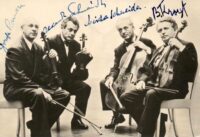





















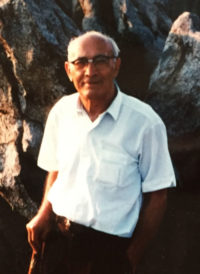


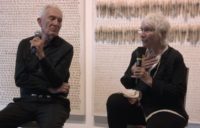


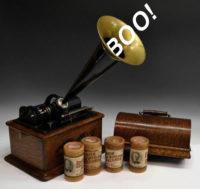
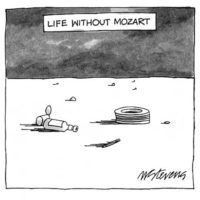















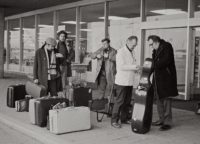



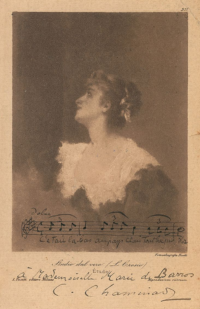




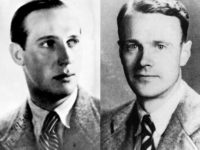


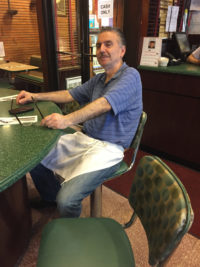



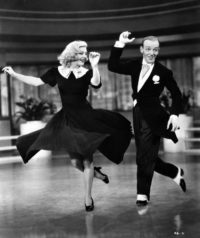







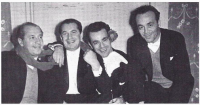
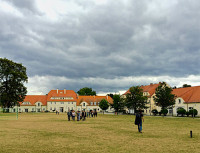
























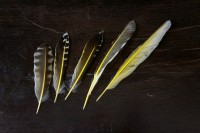

























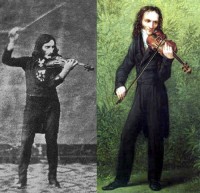



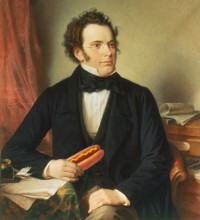

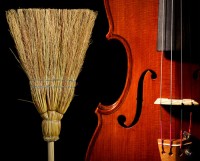





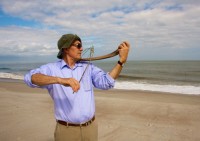























Comments
If one is mature, yes, a great exploratory self-teaching experience. If, however, one is youthful and seeking outside guidance from a master, terribly intimidating. These newsletters are always illuminating.
I love your blog, tho I’m not even a musician wannabe, merely someone who took the requisite piano lessons as a child and into young adulthood. My mother was an organist and conservatory grad, so I surely was introduced to music while in the womb. Now, at the age of 85, I like to think that the time will come when I might transition to that Place that is the source of all music and beauty. Lovely thought!
Great.
I believe it is the student who creates the teacher. The student was creating a new way to enter the music as many times as he repeated the b flat. Some students would have played the note in exactly the same way and the lesson would have been pointless; the Russian violinist showed he was learning and exploring as he repeatedly played that first note.
I have had teachers like that…no idea what they are asking me to do…just do it again. I find that style abusive. If they are truly wanting you to be creative, tell them that. “Do it again, differently, but make it as convincing as you can.” Then again, but diffently again, but convincing. That would encourage creativity without it being associated with fear or anger and is how many teachers accomplished the same thing, but without cruelty.
The best teacher is the one who makes you think. It also helps if that teacher helps you think better of yourself. I like to give constructive criticism and the positive reinforcement.
Saying that, I’m requesting more of Dr. Arnie and want to know when he is doing stand-up.
H
Dear Arnold, again a wonderful story from you, a rather amazing one. In a turbulent world, unable to silence the cacophony of destructive voices from hell challenging ethical norms – a distilled moment of sanity, and beauty. Thank you for that B flat.
Love,
Hava
Well Mr. Steinhardt! It appears this is the only way I can reach you these days! You, certainly are/were a great teacher, (are you still teaching?)
I love this blog. Haven’t had the time to read it much.
I still teach, but am not playing much at all. I have been writing plays, acting in plays, and acting in film.
If you forced yourself to teach without being able to play, you might find it interesting. I decided to only play violin if I “felt like it.” That was a scary experience, but in a way it forced me to tune in to my students in a more creative way. I began to listen to the students’ and observe bodily tension in a new way.
In violin lessons so much is covered that is non-verbal- in lessons with Galamian Asst. Sally Thomas, I gleaned so much from playing along with her on the technical side- but working with you was scary because you wanted us to think for ourselves and make bold choices- if nothing else a choice. I will however never forget a lesson you gave me on phrasing. We talked about it analytically– about whether or not we should plan ahead, depending on the piece, era, style, etc.
One of the reasons that B-flat is so important and subtle, is that each moment of the B-flat is coloring different harmonies and counterpoint moments suggesting differing harmonies.
I guess my long-winded answer is: yes, a great teacher teaches the student to make decisions for themselves and to be brave enough to think creatively, as in the Russian student. That Russian student must’ve been pretty advanced for Heifetz to teach such a subtle lesson.
At any rate, Happy Summer and I will be in NYC soon- even am staying on the Upper W Side. Will try to stop by with my son!:)
Cheers!
Love,
Rachel
PS I have been playing some VIOLA however!!!:) And- btw my violin you wanted to buy is for sale, lol- over twenty years later.
I believe that an artist-teacher ought to verbally communicate and demonstrate clearly what his/her intentions are, but not force the student to imitate what he/she is doing. Thank you for your wonderful stories and insights!
Dear Arnold, You and I go back a long time to when we were both young. We each went our own way, you to chamber music where you achieved such a wonderful career, and I to the Denver/ Colorado symphony, which I enjoyed for many years. I enjoy your columns and wish for you the happiest retirement, which you deserve.Your Olde friend Irene Rabinowitsh Abosch
Dear Arnold,
I have not read your blog for a while, but I will rectify that lapse in my judgement!
One of Heifetz’s students once described his lessons this way: “I was trying to go in a straight line while Heifetz was attempting to steer me in another direction.” He noted that Heifetz often said things that were like Zen koans that his students only understood about 15 years later. In some cases, perhaps never.
I remember a student (a good friend of mine at the time) who was working on the Walton concerto. In class after class he would only get a few bars into the piece before the tapping on the desk would stop him and Mr. Heifetz would intone, “Not ready yet.” (Rather like the repeated Bbs in the Chausson.) Finally, the student was allowed to play to the end of the movement, followed by this exchange:
“Do you like this piece?”
“Yes, Mr. Heifetz.”
“It doesn’t like you!”
End of lesson.
Interestingly, I once had a somewhat similar lesson with Gregor Piatigorsky, but one that took a turn in a different direction. I was working on Boccherini’s Concerto in G (not the infamous Bb pastiche) and my performance was substantially influenced by ideas of authenticity that were becoming prevalent at the time. When I got to the end of the first movement this conversation ensued:
“Do you like this piece?”
“Yes, Mr. Piatigorsky.”
“It doesn’t sound like it!”
That was a lesson I was able put to immediate use!
Dear Arnold,
Thanks for a great story. I believe Heifetz might have been an even greater teacher, had he been more “articulate” in his Zen-iness. For instance, “The silence in your Bb is not loud enough.”
Nice chatting with you at Marlboro recently!
Ira
Leave a Comment
*/